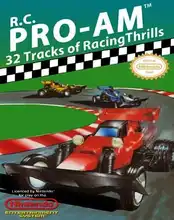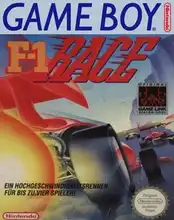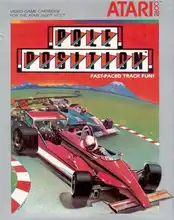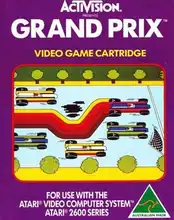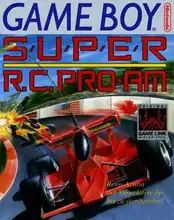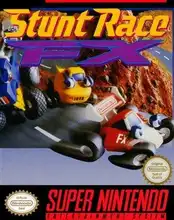Remember the days when the smell of burnt rubber was purely imaginary, replaced by the faint hum of a CRT or the whir of a floppy drive? Before ray tracing and photorealistic graphics, the thrill of the race was captured in pixels, sprites, and chunky polygons. For many of us, the introduction to high-speed competition came through track racing games.
These weren't always sprawling open worlds or complex simulations (though some tried!). Often, it was just you, a defined circuit, and the burning desire to cross that finish line first, dodging opponents, hitting speed boosts, and mastering every corner. Let's fire up the nostalgia engines and revisit some of these foundational experiences in track racing.
The Golden Age of Pixelated Tracks
The early days of gaming were fertile ground for racing concepts. Developers got creative within hardware limitations, giving us diverse takes on the simple act of going fast in circles (or point-to-point on a set path).
Top-Down & Isometric Views
Before the world rushed past your windshield in glorious pseudo-3D, many classic track racing games gave you a bird's-eye view. This perspective was perfect for showing multiple cars on screen and emphasizing track layout and strategic maneuvering.
- R.C. Pro-Am (NES): A true gem from Rare. This isometric racer featured remote-controlled cars, weapon pickups, and power-ups. The vibrant graphics and catchy tunes made every race a joy, even when the CPU opponents seemed unfairly fast. Winning wasn't just about speed; it was about collecting upgrades and strategically using missiles or bombs.
- Micro Machines (Various): Based on the popular toys, these games took the top-down view and put you in miniature vehicles racing across oversized household environments – breakfast tables, bathtubs, gardens. The quirky tracks and varied vehicles (tanks, speedboats, F1 cars) gave it a unique charm that spawned many sequels. Staying on the "track" was key, as falling off meant instant respawn penalties.
- Super Off Road (NES, Arcade, etc.): While "off-road," the NES version (and arcade original) featured defined, stadium-like tracks. This isometric view game was famous for its four-player support (with the right adapter) and the ability to earn cash to upgrade your truck between races. It was less about weapons and more about mastering the bumpy terrain and tight turns.
Early Pseudo-3D & Sprite Scaling
As technology advanced, developers yearned to put players behind the wheel. Sprite scaling and clever programming created the illusion of depth and speed.
- Pole Position (Arcade, Various): A foundational arcade racer. It wasn't strictly a "track" in the modern sense, but a defined course with corners and opponents. Its behind-the-car view, qualifying lap, and challenging AI set a standard.
- Rad Racer (NES): Famous partly for its appearance in The Wizard and its optional 3D mode (requiring those red and blue glasses!), Rad Racer offered a simple, fast-paced driving experience from a behind-the-car perspective. Dodging traffic and making checkpoints were the main challenges across its eight stages.
- OutRun (Arcade, Various): While more of a branching, scenic drive than a traditional circuit race, OutRun's smooth sprite scaling, iconic soundtrack, and luxurious car made it a benchmark for arcade racing feel. It captured the fantasy of a high-speed road trip.
Beyond the Console: PC Track Racing Classics
The PC landscape offered different flavors of racing games, from arcade ports to early attempts at simulation.
- Test Drive Series (Early): While later entries became more open, the early Test Drive games (like Test Drive II: The Duel) often featured point-to-point races on defined roads, feeling much like tracks with scenery. They were known for featuring licensed exotic cars.
- IndyCar Racing / Grand Prix Series (MicroProse): These PC titles delved deeper into simulation, offering realistic (for the time) physics, car setups, and famous real-world tracks. They catered to players who wanted more than just arcade thrills, laying groundwork for modern racing sims. Playing these often meant wrestling with DOS or early Windows versions.
Finding Your Retro Racing Fix Today
The good news is you don't need to dust off ancient hardware to enjoy many of these classic track racing games.
- Emulators: Tools like DOSBox (DOSBox website) for PC classics and various console emulators allow you to run original game ROMs on modern machines. Finding ROMs might require some searching on sites like Archive.org, which hosts abandonware.
- Digital Stores: Platforms like GOG.com (GOG.com website) specialize in classic PC titles, often pre-configured to run on modern systems without the DOSBox hassle. Keep an eye out for bundles or sales featuring older racing titles.
- Compilations & Re-releases: Sometimes, publishers release compilations of classic games on modern consoles or PC (e.g., NES Online for Switch includes Excitebike).
Frequently Asked Questions About Classic Track Racing Games
- Q: What's the difference between arcade and simulation track racing games?
- A: Arcade racers prioritize fun and accessibility with simple controls and unrealistic physics (drifting easily, high speeds). Simulations aim for realism, mimicking real-world physics, car handling, and track conditions, often requiring more complex controls.
- Q: Are classic track racing games still fun today?
- A: Absolutely! While graphics are dated, the core gameplay, challenge, and nostalgic charm remain. Mastering simple mechanics or competing with friends (if multiplayer is available) can be just as rewarding as modern games.
- Q: Where can I legally buy or download classic track racing games?
- A: GOG.com is a great source for classic PC games. Some console classics appear on modern digital stores as part of subscription services or individual purchases. Archive.org hosts many older, no-longer-commercially-sold games (abandonware) for free.
Conclusion
From the simple top-down grids to the exhilarating (for their time) pseudo-3D perspectives, track racing games have been a cornerstone of the gaming landscape for decades. They taught us about racing lines, the agony of spinning out just before the finish, and the pure joy of hitting that perfect speed boost. While modern racers offer unparalleled realism and online competition, there's a special place in our hearts for the pixelated tracks and chiptune anthems of the classics. So why not take a detour from the cutting edge and revisit some of the games that defined speed for a generation? Happy racing!

